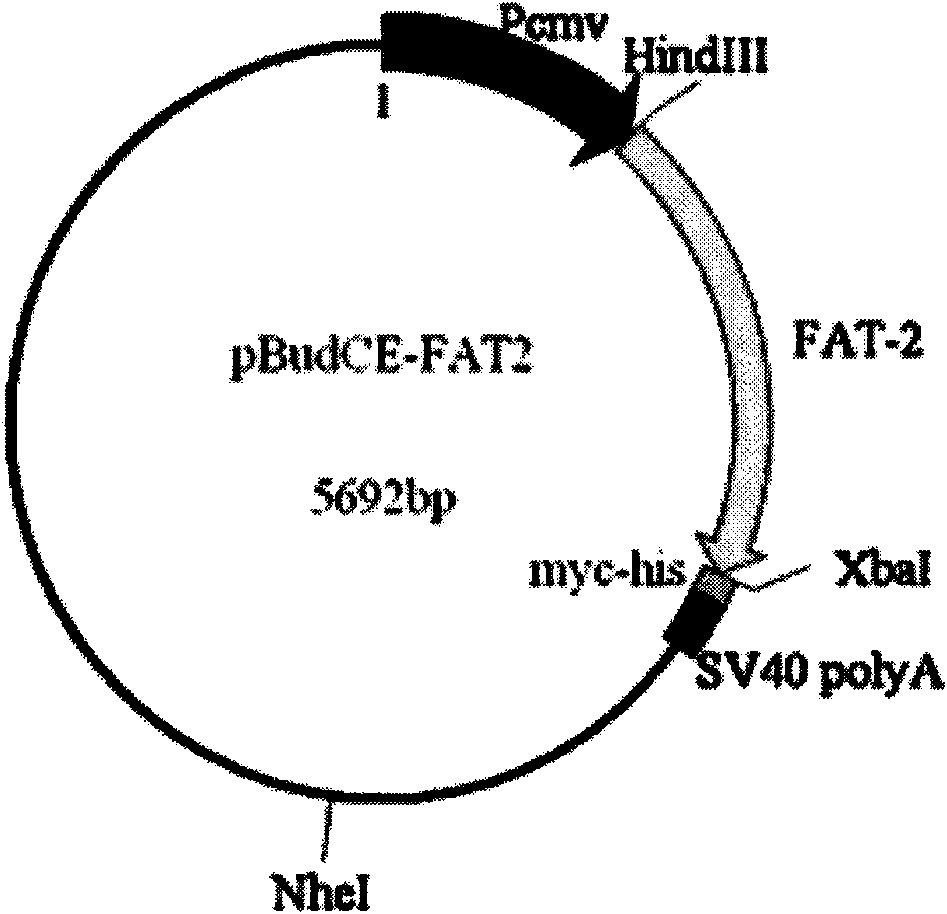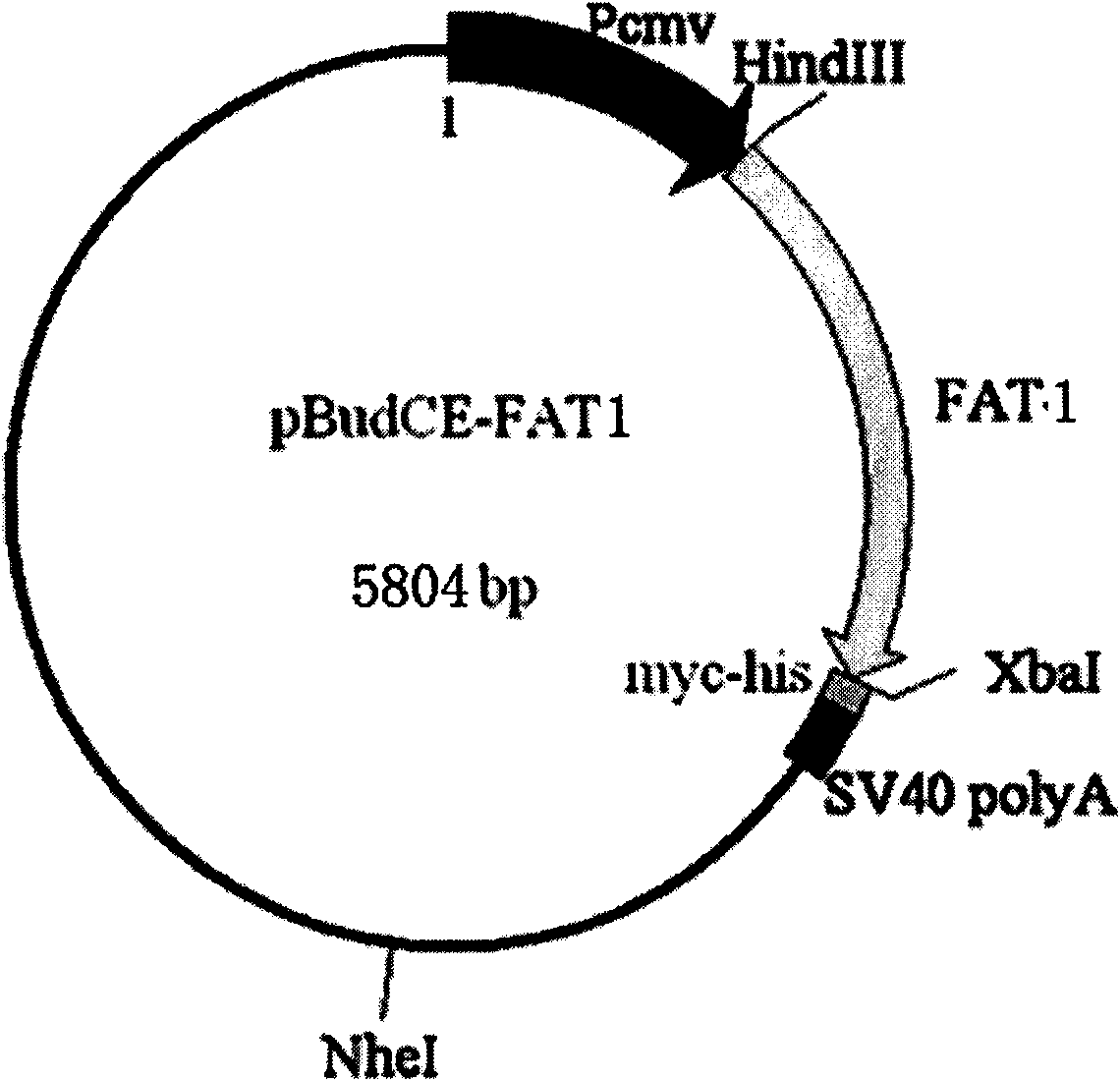Method for breeding transgenic livestock rich in polyunsaturated fatty acid
A technology of transgenic cells and fatty acid dehydrogenase, applied in the fields of botanical equipment and methods, biochemical equipment and methods, genetic engineering, etc., can solve the problems of fish oil discomfort and increase the cost of feeding
- Summary
- Abstract
- Description
- Claims
- Application Information
AI Technical Summary
Problems solved by technology
Method used
Image
Examples
Embodiment 1
[0026] Embodiment 1, rich in polyunsaturated fatty acid transgene
[0027] 1) Construction of FAT-2 gene expression vector
[0028] According to the cDNA sequence (NM_070159) of Caenorhabditis elegans (C.elegans) FAT-2 on GenBank, according to mammalian codons (including mouse, pig, cattle, sheep, a total of 70882 coding sequences, 31346087 codon information, http : / / www.kazusa.or.jp / codon / ) to optimize the codons in the coding region of the FAT-2 gene, and design a FAT-2 gene sequence suitable for expression in mammalian cells or in vivo, see sequence 1. Design three DNA fragments according to sequence 1 (F1, F2 and F3, there is a 20bp sequence overlap between F1 and F2, and between F2 and F3) or direct whole gene artificial synthesis, and design a pair of HindIII in the upstream and downstream respectively and XbaI restriction site primers (upstream primer: 5'CCAGAAGCTTAAGATGACAATCGCTACAA 3', downstream primer: 5'CCA CTC TAG ATC ATT GAG CCT TCT TAG CCT 3'), the complete new...
Embodiment 2
[0048] Embodiment 2, rich in polyunsaturated fatty acid transgenic livestock
[0049] 1) Preparation of transgenic livestock rich in polyunsaturated fatty acids
[0050] Methods for preparing transgenic livestock include microinjection, somatic cell cloning, and sperm carrier methods. Transgenic livestock include transgenic pigs, transgenic sheep, and transgenic cattle. The present invention prefers somatic cell cloning method to prepare transgenic pigs, but is not limited to somatic cell cloning method, and is not limited to the preparation of transgenic pigs.
[0051] Take pig ear tissue to inoculate and culture fibroblasts (see "Guidelines for Cell Experiments"), digest pBudCE-FAT1, pBudCE-FAT2 and pCI-neo with NheI, and transfect pig fibroblasts at a molar ratio of 3:3:1 (The transfection method is the same as in Embodiment 1), and through G418 screening and PCR identification (the identification method is the same as in Example 1), it is determined to be transgene positi...
PUM
 Login to View More
Login to View More Abstract
Description
Claims
Application Information
 Login to View More
Login to View More - R&D
- Intellectual Property
- Life Sciences
- Materials
- Tech Scout
- Unparalleled Data Quality
- Higher Quality Content
- 60% Fewer Hallucinations
Browse by: Latest US Patents, China's latest patents, Technical Efficacy Thesaurus, Application Domain, Technology Topic, Popular Technical Reports.
© 2025 PatSnap. All rights reserved.Legal|Privacy policy|Modern Slavery Act Transparency Statement|Sitemap|About US| Contact US: help@patsnap.com



